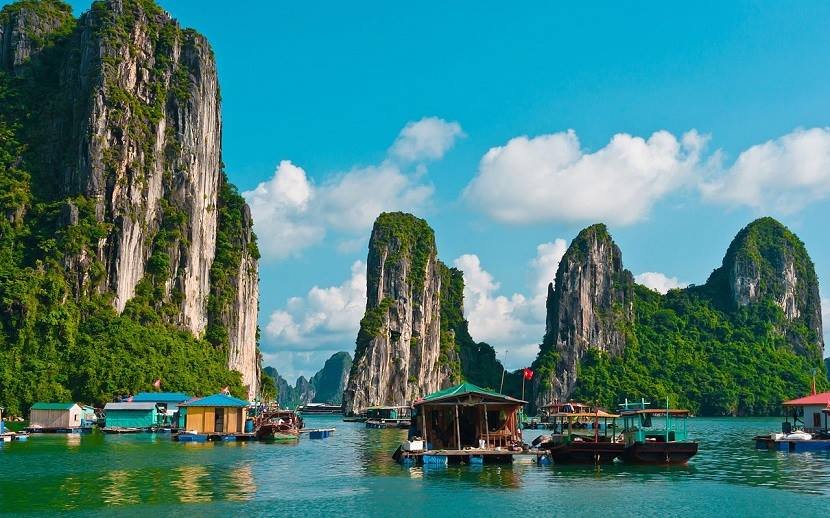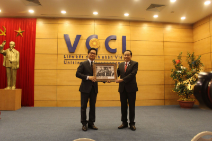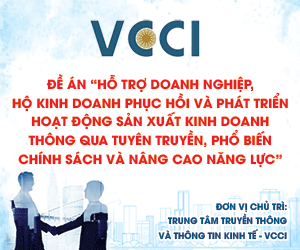Mega-city becomes new magnet attracting global investment
After merging with Binh Duong and Ba Ria–Vung Tau, Ho Chi Minh City has risen to become Viet Nam’s first mega-city, creating a powerful momentum that transforms it into a “magnet” for foreign direct investment (FDI) and a new investment hub in the region.
Strategic advantages
According to Dr. Vu Thi Hong Nhung, a lecturer at RMIT Viet Nam’s School of Business, the merger of Ho Chi Minh City, Binh Duong, and Ba Ria – Vung Tau has created Viet Nam’s first mega-city. Its strategic advantages make it an increasingly attractive destination for international investors.
The market scale and labour force have expanded significantly. The new city now covers over 6,770 square kilometres, with a population exceeding 13.6 million and a combined GRDP of more than 2.7 quadrillion VND - equivalent to nearly 24% of the national GDP. This provides the foundation for a dynamic consumer market while supplying a young, highly skilled workforce to meet the recruitment needs of global corporations.
Ho Chi Minh City serves as a financial, technology, and e-commerce hub; Binh Duong remains the nation’s “industrial capital” with strong manufacturing capacity and high FDI inflows; while Ba Ria – Vung Tau stands out with its deep-water ports, logistics services, and coastal tourism. This synergy creates a balanced economy, enabling investors to connect value chains and optimise business efficiency. The multi-sectoral structure naturally complements itself.
Finally, infrastructure potential and development space have been significantly upgraded. After merging, the city boasts unrivaled transport advantages with two existing airports - Tan Son Nhat and Con Dao - and upcoming direct connections to Long Thanh International Airport. Combined with the country’s largest seaport system, expressways, metro lines, ring roads, and other major projects underway, the city opens vast new growth space, offering favourable conditions to attract strategic investors.
Stronger regional linkages after the merger also help resolve bottlenecks in transportation, fragmented planning, and limited land reserves, while creating opportunities for developing satellite cities. This will drive supply chains, boost trade, and elevate the southern key economic region, making Ho Chi Minh City a top destination for technology, digital services, pharmaceuticals, and more.
This was evidenced in early August, when German tech giant SAP launched its SAP Labs Viet Nam Research and Development Centre in Ho Chi Minh City, with plans to invest 150 million EUR over the next five years.
Clas Neumann, Senior Vice President and Global Head of SAP Labs Network, emphasised this is the “right time” to invest in Viet Nam thanks to abundant tech talent, strong government support for innovation and digital transformation, and modern infrastructure and academic foundations.
Earlier, BE Semiconductor Industries N.V. (Netherlands) registered 42 million USD to build a semiconductor equipment manufacturing plant, opening opportunities for Viet Nam’s high-tech industry to enhance its semiconductor value chain.
Following that, Amazon Data Services Viet Nam (the US) added 48 million USD in capital to expand its data centres and cloud services in Ho Chi Minh City. Meanwhile, GSK Viet Nam (UK) injected an additional 133 million USD to expand pharmaceutical production and R&D, helping upgrade Viet Nam’s pharmaceutical and vaccine sectors while reinforcing Ho Chi Minh City’s position as a diversified global investment hub.
Commenting on these developments, Chairman of the Ho Chi Minh City People’s Committee Nguyen Van Duoc, said that since the beginning of this year, city leaders have continuously welcomed delegations of enterprises and international organizations exploring the local business environment. Meetings with Intel (the US), AEON (Japan), GS Engineering & Construction (the RoK), the Governor of the Astana Financial Centre (Kazakhstan), and the State Secretary of Argentina’s Ministry of Economy, among others, have opened up diverse cooperation opportunities. At the same time, the city has proactively organised investment promotion trips to Singapore and Malaysia and participated in major international trade fairs.
“Many foreign companies, including large corporations in trending sectors, have already come and invested in Ho Chi Minh City. This shows the investment environment is sending highly positive signals for the city’s economic growth in the coming time,” he affirmed.

Proactive shifts to attract investment
Immediately after the merger, the city set a target of attracting about 10.44 billion USD in FDI in 2025, including 7 billion USD from former Ho Chi Minh City, 1.8 million USD from former Binh Duong, and 1.64 billion USD from former Ba Ria – Vung Tau. To realise this goal, the municipal government is finalising a list of priority sectors aimed at drawing strategic investors in science, technology, and innovation.
The city has also pledged to significantly shorten investment procedures: the time required to issue a new investment registration certificate will be reduced from 15 days to just seven; applications for capital contribution, share purchases, and equity acquisitions will be processed faster; and re-issuance of investment certificates will take only one working day instead of three.
In addition, the city is actively advancing key projects and programs to create a foundation for sustainable development and strengthen urban competitiveness in the coming years. Priority initiatives include: the Infrastructure Development and Coastal Road Study Project; the Urban Railway Development Project, featuring the Thu Thiem–Long Thanh line; the Logistics Centre Development Programme; an International Exhibition and Convention Centre; flood-control and wastewater treatment projects; as well as the Ho Chi Minh City Housing Development Programme (2021–2030).
Accelerating these programmes will not only help address urban infrastructure challenges but also play a pivotal role in attracting investment, especially strategic FDI flows in high technology, finance, and logistics.
According to official statistics, FDI into Ho Chi Minh City reached nearly 6.89 billion USD in the first eight months of the year, up 58% year-on-year, ranking second nationwide. Notably, high-tech sectors, export processing zones, and industrial parks accounted for the largest share - clear evidence of a capital shift from labour-intensive industries toward those with higher value-added.
In recent dialogues and meetings with foreign businesses, leaders of Ho Chi Minh City emphasised the city’s continued efforts to improve the investment and business environment, reassuring the business community of a stable and supportive climate. They also affirmed that all current investment incentive policies remain consistent, unified, and uninterrupted, ensuring clarity and confidence for investors.
In the long term, according to Dr. Le Dat Chi, Head of the Finance Faculty at the University of Economics Ho Chi Minh City, the establishment of the Ho Chi Minh City International Financial Centre represents a golden opportunity to attract large-scale FDI flows. Once operational, the center will position the city as a gateway for global capital, building trust and long-term confidence among international corporations. Foreign investors often look for destinations with modern financial services—including guarantees, lending, risk management, and fintech solutions—so the centre will provide Ho Chi Minh City with a distinct competitive edge in capital attraction.
Beyond serving as a hub for banking, securities, and insurance, the centre is envisioned as a comprehensive ecosystem that integrates finance with technology and innovation. This will not only elevate the city’s international standing but also give FDI enterprises access to world-class investment support services.
“More importantly, the financial centre will help shape the city’s image as an international metropolis,” Dr. Le Dat Chi noted, “similar to how Bangkok or Jakarta have positioned themselves. With the latecomer’s advantage of selecting the most optimal model, Ho Chi Minh City has the potential to make a strong leap forward in becoming a premier investment destination in the region.”








